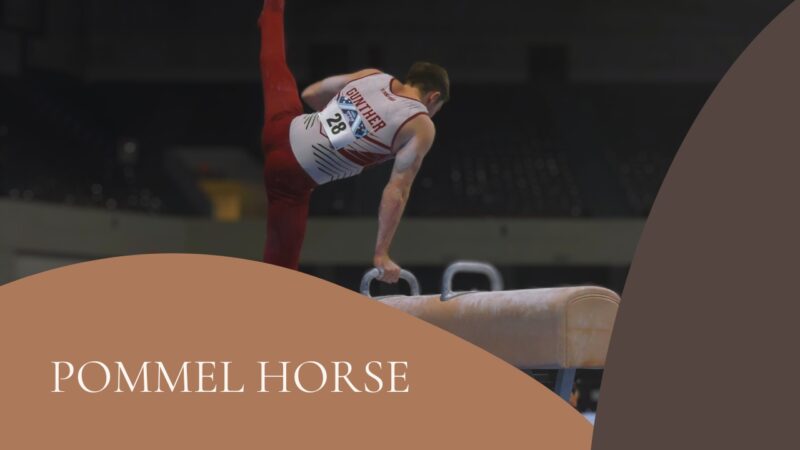Pommel Horse Definition & Meaning The world of gymnastics is a spectacle of strength, agility, and grace. Among the various apparatuses used in this sport, one stands out for its unique design and the complex skills it demands from gymnasts: the pommel horse.
This piece of equipment, with its distinctive shape and twin handles, is a central feature in men’s artistic gymnastics. Its significance lies not only in the physical prowess it requires but also in the mental fortitude gymnasts need to execute intricate routines.
The routines performed on this equipment are a blend of strength, rhythm, and fluidity, making it one of the most captivating events to watch in a gymnastics competition.
Key Features
The pommel horse is a gymnastics apparatus that resembles a vaulting horse without a vaulting board. It’s a leather-covered body with two pommels (handles) attached, which gymnasts use to perform a series of continuous circular movements, scissor kicks, and other complex maneuvers.
The pommel horse demands a high level of upper body strength, flexibility, and balance, making it one of the most challenging apparatuses in men’s gymnastics. The unique design of the pommel horse is integral to the skills performed on it.
The body of the horse is elongated and slightly curved, allowing gymnasts to swing their legs freely on either side. The pommels, positioned a specific distance apart, provide the gymnast with support while enabling a wide range of hand placements and movements.
The pommel horse is not just about physical strength; it’s also about rhythm and timing. Each swing, each hand placement, and each body movement must be perfectly timed to maintain momentum and prevent falls. This combination of physical and mental demands is what makes it such a fascinating apparatus in the world of gymnastics.
Historical Origins
The pommel horse traces its roots back to ancient times, where it was used as a training device for soldiers to practice mounting and dismounting horses. This early form of the pommel horse was a simple wooden structure, far removed from the sophisticated apparatus we see in gymnastics today.
However, the fundamental principles of strength, agility, and balance have remained constant throughout its evolution. Over the years, the apparatus has undergone significant transformations. It was incorporated into gymnastics in the early 19th century by Friedrich Ludwig Jahn, the father of modern gymnastics.
Jahn introduced the pommel horse to develop the physical strength and discipline of his students. Since then, it has become an integral part of men’s artistic gymnastics, showcasing the skill and prowess of athletes at the highest level of competition.
The evolution of the pommel horse is a testament to the progress of gymnastics as a sport. From its humble beginnings as a military training device to its current status as a premier gymnastics apparatus, the pommel horse embodies the spirit of continuous improvement and innovation that defines gymnastics.
It stands as a symbol of the sport’s history and its ongoing evolution.
Pommel Horse in Artistic Gymnastics
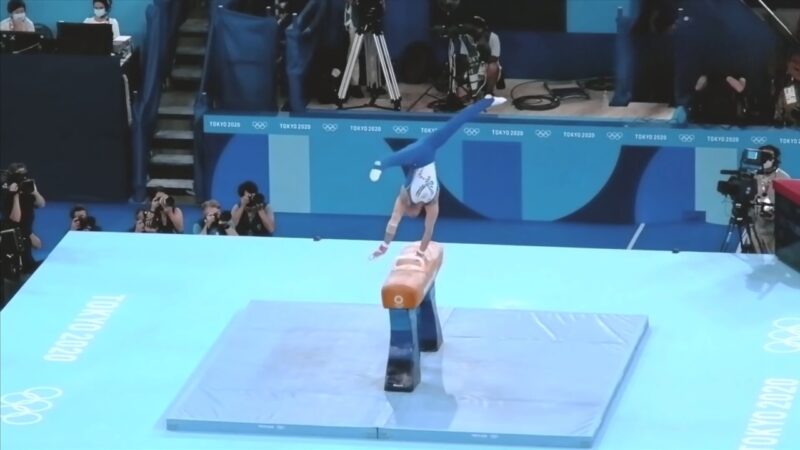
In the realm of artistic gymnastics, the pommel horse holds a place of prominence. It is one of six apparatuses used in men’s gymnastics, alongside the floor, vault, rings, parallel bars, and horizontal bar. The pommel horse is unique in its demands, requiring a blend of strength, flexibility, balance, and rhythm unlike any other apparatus.
This apparatus contributes significantly to a gymnast’s overall score in a competition. Routines on this apparatus are scored based on difficulty, execution, and artistry. The difficulty score is determined by the complexity of the skills performed, while the execution score reflects the gymnast’s form, technique, and control.
The artistry score, although less quantifiable, assesses the fluidity, rhythm, and aesthetic appeal of the routine. The routines performed on this equipment are a testament to the gymnast’s dedication, discipline, and passion for the sport. The pommel horse, with its unique demands and challenges, truly embodies the spirit of artistic gymnastics.
Apparatus Specifications
This is a meticulously designed piece of equipment. It measures 160 cm in length, 35 cm in width, and 115 cm in height, providing a stable platform for gymnasts to perform their routines. The two pommels, or handles, are 12 cm in height and are set 40 to 45 cm apart.
These precise measurements ensure consistency across competitions and allow gymnasts to train and perform under standardized conditions. The body of the apparatus is traditionally made of a metal frame covered with foam padding and a layer of leather.
This design provides the necessary firmness for support while ensuring a degree of cushioning for the gymnast. The pommels are made of plastic or metal and are designed to provide a secure grip for the gymnast’s hands.
While the basic design has remained largely unchanged over the years, advancements in materials and manufacturing techniques have led to improvements in safety, durability, and performance.
Exploring the realm of gymnastics bars offers athletes the opportunity to reach new heights and challenge themselves in various disciplines.
Gymnastic Skills on the Pommel Horse
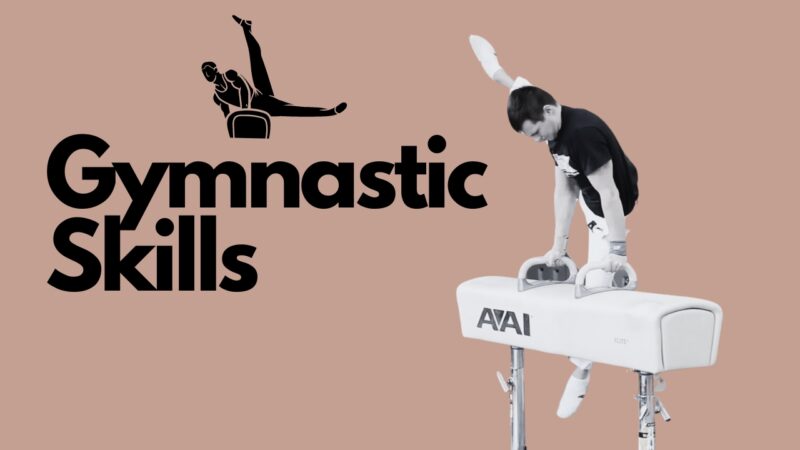
The pommel horse is known for the variety and complexity of skills that can be performed on it. These skills range from basic swings and circles to intricate combinations involving hand placements, leg movements, and body positions.
Each skill requires a high degree of strength, flexibility, balance, and coordination, making the pommel horse one of the most challenging apparatuses in gymnastics. Some of the most common skills performed on the pommel horse include the circle, the scissor, and the handstand.
The handstand, one of the most visually impressive skills, involves balancing the body in an inverted position on the pommels. Performing these skills is not just about physical ability; it’s also about mental toughness.
Gymnasts must maintain focus and composure throughout their routine, executing each skill with precision and grace under the pressure of competition.
Training and Techniques
Mastering this apparatus requires a combination of rigorous training and refined technique. Gymnasts spend countless hours practicing their skills, building their strength, and perfecting their form.
The training regimen for the pommel horse is as demanding as it is diverse, encompassing elements of strength training, flexibility exercises, balance drills, and technical practice. Key techniques for the pommel horse revolve around maintaining control and rhythm.
Gymnasts must learn to distribute their weight evenly, control their momentum, and synchronize their movements with the rhythm of the horse. This requires a deep understanding of body mechanics and a keen sense of timing. Drills play a crucial role in pommel horse training.
They allow gymnasts to break down complex skills into manageable components, focus on specific aspects of their technique, and gradually build up their proficiency. From basic swings to intricate combinations, every skill on the pommel horse is the product of diligent practice and precise technique.
Circles and Scissors
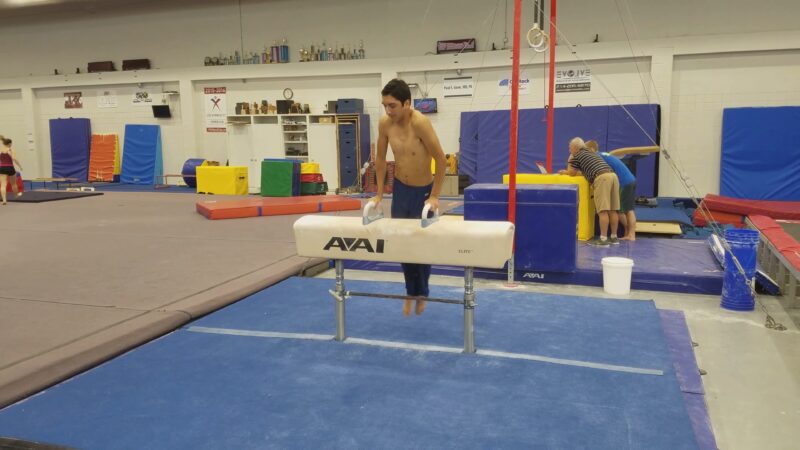
Two fundamental techniques on the pommel horse are the circle and the scissor. These skills form the foundation of most pommel horse routines and are essential for any aspiring gymnast. The circle involves swinging the legs in a circular motion around the horse while maintaining contact with the hands.
This skill requires a combination of upper-body strength, lower-body flexibility, and core stability. The mechanics of the circle involve a continuous shifting of weight, a precise placement of the hands, and a fluid movement of the legs.
The scissor involves a change of leg position in mid-air, resembling the action of a pair of scissors. This skill requires a high degree of leg strength, hip flexibility, and spatial awareness. The execution of the scissor involves a powerful push-off, a controlled split of the legs, and a smooth reconnection.
Both the circle and the scissor are challenging skills to master, but they are also some of the most visually impressive elements of a pommel horse routine. They showcase the gymnast’s strength, flexibility, and control, and they add a dynamic quality to the performance.
Pommel Horse Routines
While the apparatus demands physical strength and technical precision, it also provides a platform for gymnasts to express their artistry and creativity. Each routine is a unique composition, reflecting the gymnast’s personal style, creativity, and interpretation of the music.
Artistic elements are incorporated into routines through the choice and sequencing of skills, the use of rhythm and timing, and the overall presentation. A well-executed routine is not just technically proficient, but also aesthetically pleasing. It captivates the audience, tells a story, and showcases the gymnast’s personality.
Opportunities for creativity abound on the pommel horse. Gymnasts can vary their hand placements, incorporate different body positions, and play with the tempo of their routines. These creative choices add a layer of complexity to the performance, making it not just a display of athletic prowess, but also a form of artistic expression.
Competitive Gymnastics
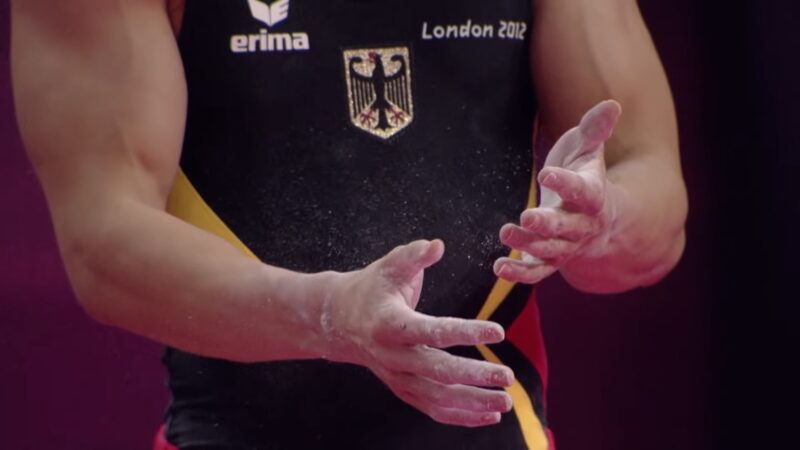
In competitive gymnastics, the pommel horse plays a crucial role in both individual and team competitions. Gymnasts are judged on their execution of skills, the difficulty of their routine, and their artistic interpretation.
A strong performance on the pommel horse can significantly contribute to a gymnast’s overall score and position in the competition. There have been many notable gymnasts known for their exceptional performances on the pommel horse.
These athletes have pushed the boundaries of what is possible on this apparatus, executing complex skills with precision and grace, and inspiring future generations of gymnasts. Basically, this is a stage where gymnasts can showcase their skill, courage, and creativity.
It’s a platform where they can push their limits, express their artistry, and leave their mark on the sport of gymnastics.
The kip in gymnastics is a significant accomplishment that holds a special place in the evolution of skills.
Challenges and Precautions
The apparatus is a unique set of challenges for gymnasts. The complexity of the skills, the precision required in their execution, and the physical demands of the apparatus make it one of the most difficult events in gymnastics.
Common challenges include maintaining rhythm and momentum, executing smooth transitions between skills, and managing fatigue during long routines. Safety is a paramount concern when training and competing on the pommel horse.
Gymnasts must learn to fall safely to minimize the risk of injury and must always be supervised by a qualified coach. The use of appropriate safety equipment, such as mats and hand guards, is also essential. Precautions must also be taken to prevent overuse injuries, which are common in gymnastics due to the repetitive nature of the training.
This includes proper warm-up and cool-down routines, regular rest periods, and a focus on technique and form over sheer repetition.
Innovations and Advancements
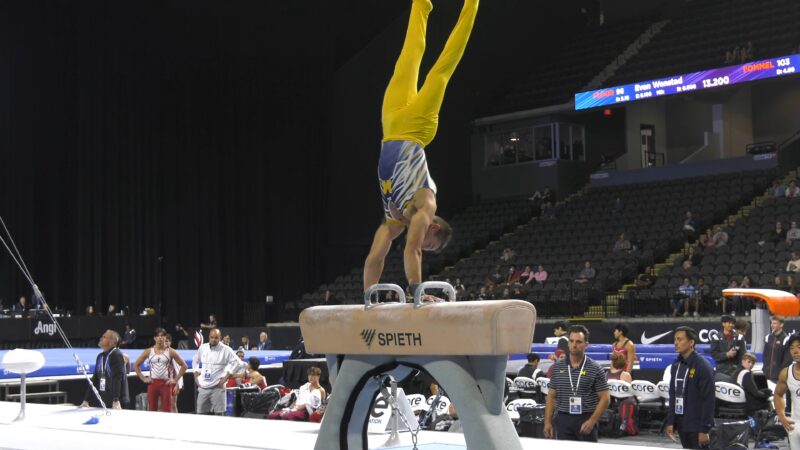
Over the years, there have been numerous innovations and advancements in the design and construction of the pommel horse. These have been driven by a desire to improve safety, enhance performance, and meet the evolving needs of the sport.
One of the key advancements has been the use of modern materials in the construction of the pommel horse. The use of foam padding and synthetic leather has improved the safety and durability of the apparatus, while the introduction of adjustable pommels has allowed for greater customization to suit the individual needs of gymnasts.
Technology has also played a role in the evolution of the pommel horse. From the use of video analysis to refine technique, to the development of virtual reality systems for training, technology is continually shaping the future of this fascinating apparatus.
FAQs
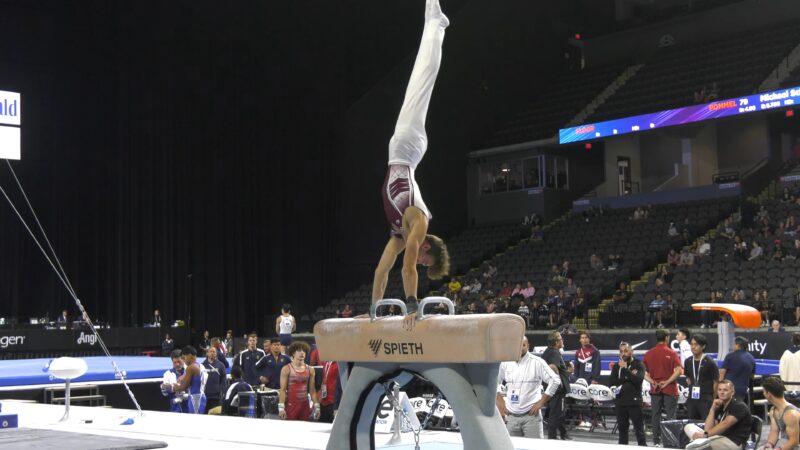
What Is the Significance of This Apparatus in The Ancient Olympic Games?
The Romans added the apparatus to the ancient Olympic Games as a way to teach mounting and dismounting.
What Are Some Variations on A Typical Circling Skill in A Pommel Horse Routine?
Variations on a typical circling skill include turning (moores and spindles), by straddling their legs (Flairs), placing one or both hands on the pommel or the leather, or moving up and down the horse placing their hands on the pommel and/or the leather (traveling).
What Is a Good Score in The Routine?
Scoring in gymnastics can be complex, as it involves both a difficulty score and an execution score. A good score in a pommel horse routine would generally be above 14.0, but this can vary depending on the level of competition.
What Are Some Common Injuries Associated with The Apparatus?
Common injuries include wrist sprains and strains, shoulder injuries, and in some cases, falls can lead to head or neck injuries.
What Is a Russian Wendeswing?
A Russian Wendeswing is a move where the gymnast performs a 360-degree turn on one hand while swinging their legs in a circular motion.
Conclusion
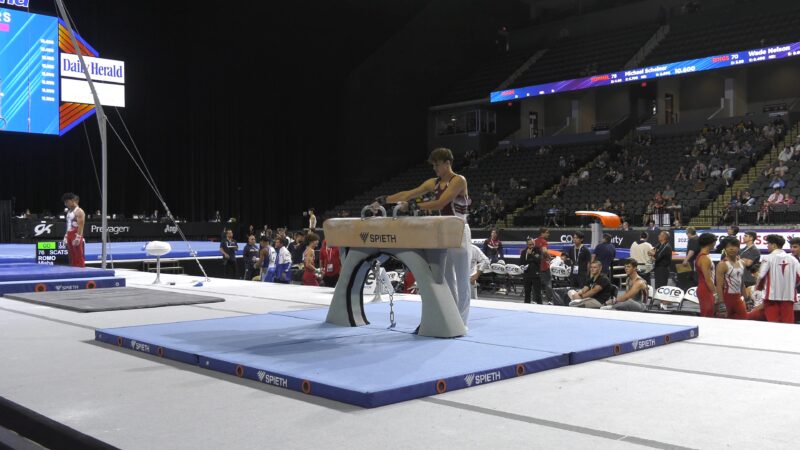
The pommel horse, with its rich history and unique demands, holds a special place in the world of gymnastics. It tests the limits of a gymnast’s strength, flexibility, balance, and creativity. Its importance extends beyond the gymnastics arena.
It teaches valuable lessons about discipline, perseverance, and the pursuit of excellence. It challenges gymnasts to push their limits, to strive for perfection, and to rise above adversity. As we reflect on the significance of the pommel horse, we are reminded of the beauty and complexity of gymnastics.
We are inspired by the athletes who dedicate their lives to mastering this demanding apparatus, and we are captivated by the performances that bring audiences to their feet.
